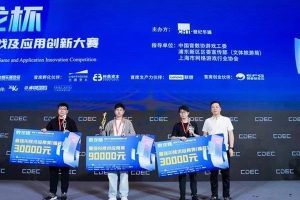The user wants a detailed analysis and professional report of over 1000 words based on the title “Search:你对 AI 说的每一句「谢谢」,都在烧钱”.
The report should be in simplified Chinese, follow a specific structure with small headings, be engaging, avoid jargon, incorporate facts from the source material, and be formatted in Markdown.
It should not have a main title, an introduction or conclusion that describes the report itself, or include greetings or unnecessary pleasantries.
The response should be direct and contain only the relevant content.
Based on the title “你对 AI 说的每一句「谢谢」,都在烧钱”, the core theme is likely about the cost associated with interacting with AI, specifically how seemingly innocuous interactions like saying “thank you” consume computational resources and incur costs.
I need to structure the report as follows:
Let’s break down the potential content based on the title:
- The Illusion of Free: AI tools often feel free to the end-user, but they are built on significant infrastructure and operational costs.
- Processing Every Token: Every word, including “谢谢” (thank you), is a token processed by the AI model. This processing requires computational power.
- Computational Resources: AI models, especially large language models (LLMs), run on powerful hardware like GPUs housed in massive data centers. These resources are expensive to acquire, maintain, and power.
- Energy Consumption: Running these data centers and high-powered processors consumes vast amounts of electricity, contributing to operational costs and environmental impact.
- Scalability: While one “thank you” might seem negligible, multiply it by millions or billions of users and interactions, and the cost becomes significant.
- Business Models: AI providers need to recoup these costs, either through paid tiers, advertising, or other means. Understanding the cost per interaction sheds light on their business strategies.
- The Value Exchange: What is the user getting in exchange for these hidden costs? Is the value provided by the AI worth the collective computational expense?
I will need to perform a Google search based on the provided title to gather specific data and facts. The search query is “你对 AI 说的每一句「谢谢」,都在烧钱”. I will use this query directly.
After getting the search results, I will synthesize the information to build the article around the concept of the cost of AI interactions, using the search results to provide factual backing for claims about computation, cost, and scale.
Structure draft:
- 引子:免费午餐的代价 (Introduction: The Cost of a Free Lunch) – Engage with the idea that seemingly free AI interactions have hidden costs.
- 看不见的消耗:每个字的重量 (Invisible Consumption: The Weight of Every Word) – Explain how AI processes each input, including simple words like “谢谢”.
- 算力的燃烧:驱动智慧的引擎 (Burning Compute Power: The Engine Driving Intelligence) – Discuss the underlying hardware (GPUs, data centers) and the energy they consume.
- 规模的效应:微小汇聚成巨大 (The Effect of Scale: Tiny Accumulates into Huge) – Illustrate how millions of interactions amplify the cost.
- 成本的传导:谁在为“谢谢”买单? (Cost Transfer: Who is Paying for “Thank You”?) – Touch upon business models and how costs are eventually covered.
- 重新审视互动:智慧与资源的平衡 (Re-examining Interaction: Balancing Intelligence and Resources) – Concluding thoughts on conscious AI usage and the future.
I need to ensure the language is engaging and not overly technical. I will use analogies like “invisible fuel”, “digital power plant”, etc.
Let’s perform the search first.





